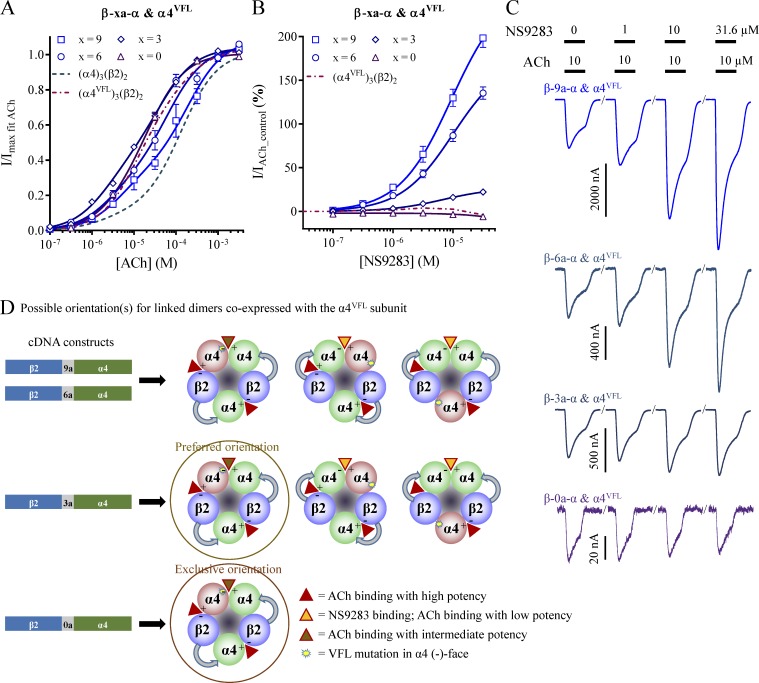Figure 6.
ACh and NS9283 sensitivity and potential stoichiometry of receptors from concatenated β-xa-α dimer constructs. X. laevis oocytes were subjected to two-electrode voltage-clamp electrophysiology. Electrophysiological data were evaluated as described in Materials and methods; also see Fig. 1. (A and B) ACh (A) and NS9283 (B) CRRs were obtained from oocytes coinjected with β-xa-α and the monomeric α4VFL subunit in a 1:1 ratio. X represents the number of amino acids in the linker, and specific linker sequences are shown in Table 3. Data from n = 5–24 experiments are depicted as means ± SEM as a function of the ACh or NS9283 concentration, and regression results are presented in Table 1. Data for the receptor obtained from monomeric α4VFL and β2 subunits in Fig. 1 are indicated with dashed lines. (C) Representative traces illustrating NS9283 responses at oocytes injected with β-9a-α and α4VFL, β-6a-α and α4VFL, β-3a-α and α4VFL, or β-0a-α and α4VFL. Bars above the traces indicate the 30-s application time and concentrations of applied compounds. (D) Based on the lack of NS9283 efficacy observed in B, receptors originating from coinjection of β-0a-α with the monomeric α4VFL subunit have the concatenated construct assembled exclusively in the counterclockwise orientation when viewed from the synaptic cleft.

